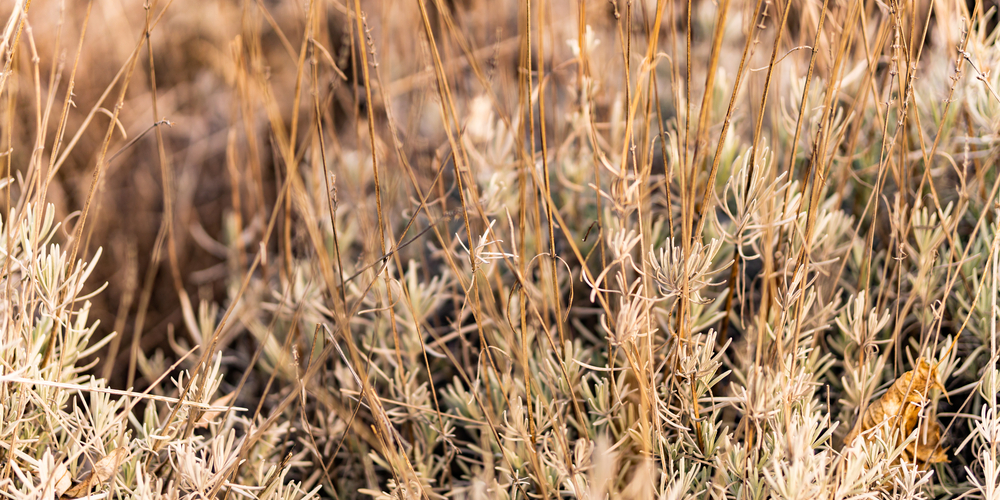Lavender is an excellent, low-maintenance flowering plant that thrives in sandy, sunny spots. It is considered a hardy perennial and blooms into beautiful flowers that grace your garden with a sweet fragrance, often in mid-summer.
However, one of the challenges gardeners have to endure is when these flowers start responding poorly to the care they receive.
While lavender plants are often considered drought-tolerant plants, some things may cause them to wilt. Of course, wilting is common and can occur in any plant, even with adequate care. Most plants wilt, drop, or dry off, particularly when the growing environment is not hospitable enough.
Lavenders wilt mostly after being transplanted. However, they tend to catch up with the new environment and grow healthy, ultimately adding color to your garden. Several other issues can make lavender wilt.
Causes of wilting in lavender plants

Lavender are generally drought-tolerant plants. If your lavender plants are wilting or show signs of wilting, here are possible reasons.
1.Transplant stress
Transplant shock is a common issue in many plants, and lavender is no exception. When you transplant seedlings, you introduce them to new climate and soil conditions, and they most likely will react by wilting. Thankfully, they will likely adjust to the new conditions and continue growing.
The new conditions include humidity, water, soil structure, soil level, and temperature changes. All these aspects contribute significantly to the growth and survival of the plant, and if they vary greatly from the initial ones, wilting can occur.
New lavender transplants can also wilt due to sweltering temperatures. It is advisable to water your lavender plants two times a week during summer but reduce the frequency as they get established. Typically, the best time to transplant lavender is in spring since the cool weather supports new growth and easy establishment.
2. Soil acidity
Lavender grows well in slightly alkaline or neutral soils. A few lavender species can manage to grow well in slightly acidic soils, but they will produce very small or no flowers during the blooming season. High acidic soils will cause the lavender plant to wilt.
Acidic soils are harmful to the survival of lavender plants and many other mint family plants. For the best results, plant lavender in soil with a pH between 6 and 8.
3. Hot weather
Lavender plants are generally drought-resistant but may not be able to withstand extremely hot temperatures. As such, if temperatures become intolerable, the plants react to such hot conditions by wilting. You may not easily prevent wilting caused by hot weather, especially after a previous spell of favorable weather.
However, this kind of wilting is considered temporary and believed to be a reaction to stress posed by sudden temperature increases. Avoid watering the flowers at such times. Always wait until evening, when the temperature drops and the plant regains its normal state, for you to effectively water.
4. Small growing space or pot
There are certain recommended spacing intervals and hole depth when planting lavender. If you make very shallow holes and give them very little space, they will compete for soil nutrients, and in the process, they may start wilting.
For indoor lavender plants, consider 16 inches planting pots— any pot smaller than that will not provide adequate growing space, which can cause wilting.
Adequate pot space gives the lavender roots to establish. A small pot will dry out very fast during the hot days, and the roots will have no place to draw the little water it requires for survival unless you keep watering.
5. Too many nutrients in the soil
Lavender does not require soil that is highly fertile for it to thrive. High nutrients in the soil can cause wilting in lavender plants. Overly fertilized soil will not only cause wilting but will also hamper effective growth.
6. Overwatering
Even though watering lavender can be good for its growth during the first few weeks, overwatering is quite harmful. The soil where you grow lavender should be well-drained to prevent water-logging.
Much water around the plants makes it hard for roots to be aerated, and the plant will react by wilting. Avoid watering lavender plants once they establish themselves to the ground and only do it twice a week during the hot, dry summer season.
Why is my lavender wilting: Conclusion
Wilting is a sign of stress in lavender plants, and if you notice it, it is advisable to check the most likely cause and address it as soon as possible.
Hopefully, this article helps you identify the causes of wilting in lavender so you can know what to address when you observe wilting.
You may also like: Overwatered Japanese Maple
